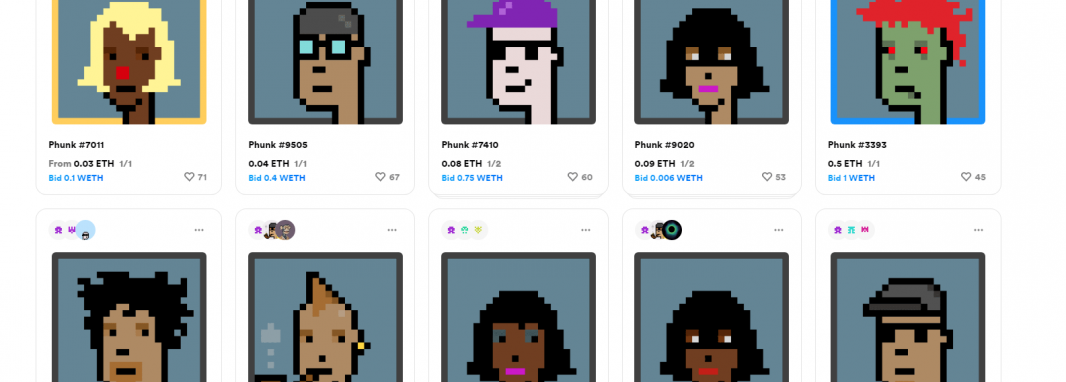If you've spent any time checking out the tech news over the last year or so, the chances are that you've already heard of NFTs. Short for a non-fungible token, NFTs are digital certificates of authenticity and ownership.
It's similar to what we've been using for years to certify that artwork and even celebrity signatures are the real deal. NFTs do the same thing, but they're specifically designed for digital files, ranging from JPGs and GIFs to mp3s. One GIF recently sold for an incredible $600,000, and that's just the tip of the iceberg.
But you probably already know the basics, so let's take a look at the question that's on a lot of people's minds: how do I make an NFT?
We will help you with your NFT project!
The good news for you is that it's pretty easy to get started, and the market is still new and hungry enough that there's still plenty of room for new NFTs on the marketplace. And so, without further ado, let's dive on in and share everything you need to know about making an NFT.
Step #1: Generate Your Artwork
Generating the artwork is the easy part, assuming that you're already an artist. Again, the chances are that you've already been doing this, it's just that any revenue that's coming from it has been going to the sites you've posted it in rather than to you as the artist.
Of course, you can also commission art and create an NFT, and the only real requirement for creating an NFT for digital art is that you own the copyright to the piece. That's because NFTs are all about ownership, and if you don't own the piece in the first place, then there's no legal basis for you to sell it.
Bear in mind that you may need to be able to prove ownership to a marketplace before you're able to create your NFT. It's also generally better to create original artwork than to create NFTs for existing artworks, purely because there have been a number of NFT fakes in recent years.
Step #2: Distribution
Distribution is interesting because you have a few different options available to you. The first thing you need to know is that there are a bunch of blockchains that support the NFT token standard, including Ethereum, Binance Smart Chain, Cosmos and Polkadot.
You'll want to bear in mind that once you mint your NFT on a blockchain, it's basically impossible to move it on to another. Take some time to research each of the different blockchains for nft to figure out if you have a preference, and go with Ethereum if in doubt because that's the most popular, although Binance has more affordable transaction fees.
You have two main options from here.
Listing on an existing marketplace
If you're planning on taking this approach, you need to remember that the blockchain you choose will determine which marketplaces you can use. If you go with Ethereum, which we'll be using for this article's purposes, you can pick your pick from a bunch of them, including OpenSea, Rarible and Mintable.
Creating an NFT on Ethereum is pretty easy, and it only requires an Ethereum wallet that supports NFTs. Coinbase will do the job nicely, and so will many others, including MetaMask and Trust Wallet. Choose your marketplace and follow the instructions that they provide.
Smart contract development and minting
This approach is a little more technical, and so you might want to find yourself a development partner who can help you. There is a range of tools that you can use to deploy a smart contract, with web3 CLI arguably the easiest and quickest tool for compiling and deploying contracts.
As for the process, it looks a little something like this:
- Set up your environment
- Install the CLI tool
- Set the network
- Deploy
- Mint NFTs
- Transfer NFTs
Step #3: Promotion
With distribution handled, it's time to think about marketing and promotion. As a general rule, all of the marketing best practices that you're already aware of still apply, but there are a few other considerations for you to think about.
You have two main choices:
Build a marketing site to sell your NFTs
One option is to build your own website and sell your NFTs through that. The advantage to this approach is that you own the site and have total control over it, which means that you can customise it however you want to and deploy any tracking and other functionality that you might need. You also have total control over which NFTs are on sale.
Just bear in mind that many people prefer to buy directly from NFT marketplaces, partly because there's already a certain amount of trust there, as well as more choice in terms of the NFTs that are on offer. You're also going to have to carry out all of your own marketing and invest significant resources to drive traffic there.
Of course, building your own time site is time-consuming and resource-intensive, so you might want to avoid this one unless you're planning to bring multiple NFTs to market. You can think of it as like trying to build a branded social networking site in about 2007. You can do it, but it's going to be difficult.
Integration to other marketplaces
There's a reasonable likelihood that you've already looked into other marketplaces because they can handle the distribution for you. If you're using these marketplaces for distribution, you may want to simply use those as your promotional hub.
The downside to this is that all of your marketing efforts will be going to a third-party platform rather than to a web property that you own yourself. You also won't have access to analytical data or other useful functionality in the same way that you would if you built your own site.
But there are advantages, too. Perhaps the most obvious is that it's the easiest option, but you have to also bear in mind that you're trading convenience for functionality. You need to decide which is the best option for you.
Conclusion
Now that you know how to develop an NFT and bring it to market, it's over to you to get started. The good news is that we've covered enough here to help you out along the process without risking going into specifics on marketplaces that are changing every day.
Most of the NFT brokers and associated websites provide thorough documentation to help you out along the way. If you ever get stuck, then you can always find yourself an NFT development partner, which is where we come in.
So if you're looking to launch an NFT and you need a helping hand, don't be afraid to reach out to us. We have plenty of experience at NFT development and love to meet new people and help new artists and owners bring their NFTs to market, so contact us today to find out more.
In the meantime, if you've already got experience of bringing NFTs to market, we'd love to hear how you got on. Be sure to share your story and to keep the discussion going in the comments. We look forward to hearing from you!
We will help you with your NFT project!






